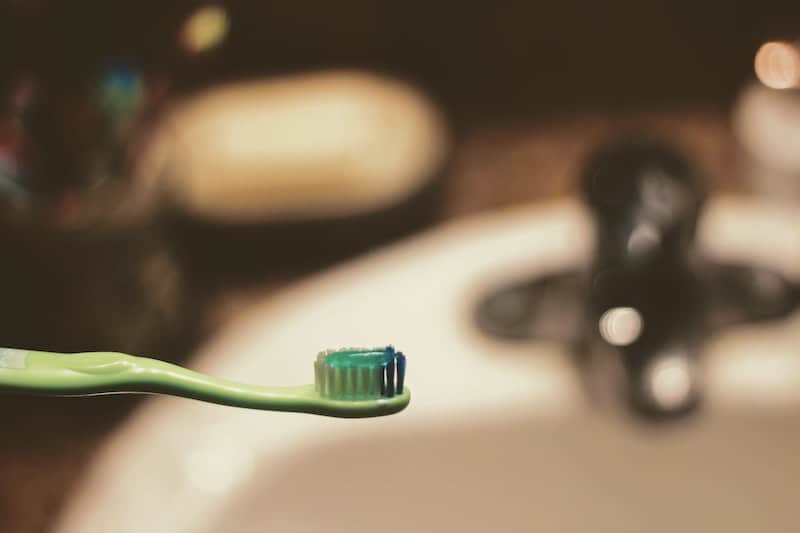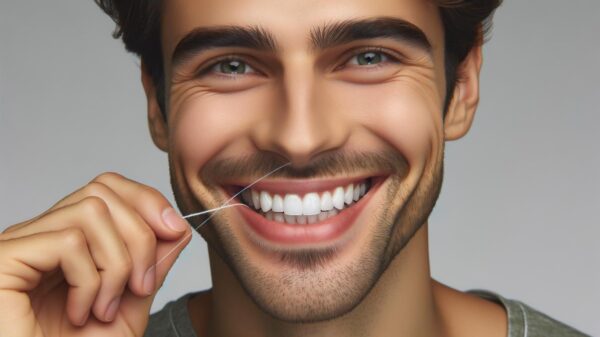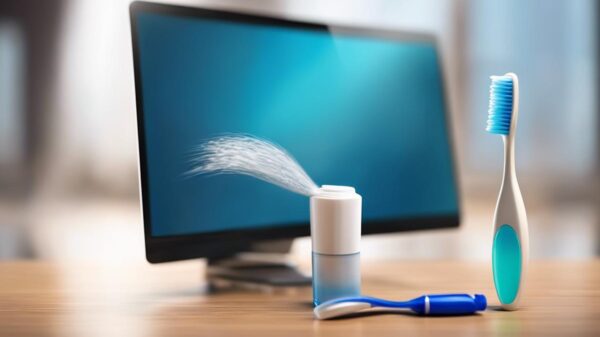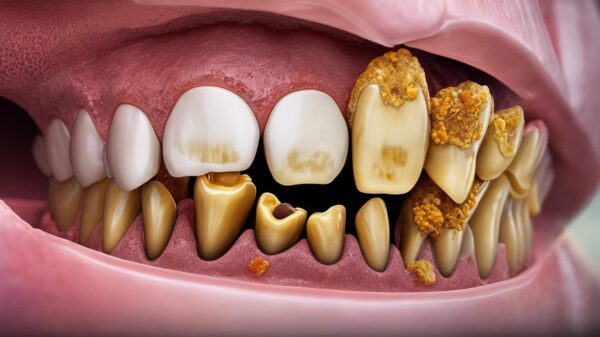What Causes Yellow Toothbrushes?
Brushing your or your children’s teeth can be at the bottom of the to-do list. Life is busy, from getting everyone out the door in the morning to finally laying down to sleep. Keeping up with dental health can be a pain, but it should also always be a priority. Studies show that your dental health impacts your overall health and staying on top of dental checkups and daily preventative care is vital to keeping your mouth and body healthy.
Sometimes, our toothbrushes can give hints into the status of our dental teeth. Perhaps you’ve noticed a strange but slight odor to your toothbrush. Or maybe you checked your child’s toothbrush only to see the bristles have turned yellow, even though the toothbrush is a reasonably new one!
So, why does your toothbrush turn yellow? If your toothbrush begins to turn strange colors, it could be a cause for concern. Usually, the underlying reason for a toothbrush turning yellow is too much sugar in a diet. Sugar tends to worsen the buildup of plaque in your mouth, causing a more yellowish color to build on your teeth. If you’re frequently brushing your teeth, this buildup might also transfer to your toothbrush, staining it yellow.
What if Your Toothbrush Is Another Color?
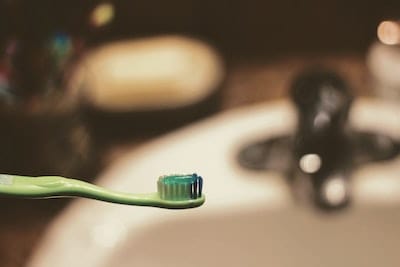 If your toothbrush isn’t just yellow but other odd colors, then the issue most likely still lies in the diet. Most foods that are high in processed sugar also contain dye that will cause discoloration of teeth and your toothbrush.
If your toothbrush isn’t just yellow but other odd colors, then the issue most likely still lies in the diet. Most foods that are high in processed sugar also contain dye that will cause discoloration of teeth and your toothbrush.
Sweets and candy can leave a residue that lingers in your teeth and creates plaque and an odd dyed color on your toothbrush. The best way to get rid of this strange discoloration? Not surprisingly, it’s to cut back on your sugar intake. Instead of opting for the sugary candy option, opt for a snack of nuts, seeds, or fruit. This choice will not only have a positive effect on your teeth but on your overall health.
A healthy diet can have a major positive impact on your overall health, from your hormones to your teeth. However, treating yourself is natural! If you want to indulge in an occasional treat, save it for after you’ve eaten something else. Since your mouth has produced more saliva for that meal, your teeth are less likely to be left with a sugary film that attracts plague.
Combating Toothbrush Discoloration
Other ways to combat discoloration due to sugary candies and treats is by being very consistent with your teeth brushing routine. Brushing at least twice a day and flossing once a day is vital in keeping the health of your teeth intact. You can also increase your water intake, which will help with leftover particles of candy and sugar. You should also always keep up with your dental examination appointments with your dentist.
Dental professionals will be able to keep careful watch over your teeth and advise you on preventative measures so your smile stays both beautiful and healthy. Utilizing these handy tips should ensure that your toothbrush will return to its normal color and you’re teeth to being healthier.
If you’re still having problems with your toothbrush turning odd colors, then certainly contact your Jenks dentist and discuss it with them. Professional dental help is always the way to go if you are not sure about something. Preventative dental care is almost cheaper and less stressful in the long run.
Other Things Your Toothbrush Might Be Saying
A toothbrush is a personal item that we use more than most of our other cosmetics or brushes. Most people brush their teeth daily for at least two minutes, standing in front of the sink, staring at themselves in the mirror for a few daily minutes of routine dental hygiene.
Toothbrushes can say a lot about a person, too. From fancy electric toothbrushes with tons of settings to a simple drug store brush, there’s a lot of different types for a lot of different people. But not only does a toothbrush tell a story of what someone is like, but also what their dental health is like.
Primary Cause of Toothbrush Discoloration
As we discussed earlier in the blog post, strange discoloration on your toothbrush could signal that you’re diet is affecting your dental health. This can be aided by eating less sugary foods, avoiding foods with artificial coloring that can cause staining, and drinking more water.
Limiting your intake of sugary substances will be healthy for your teeth will help to eliminate discoloration issues as well as decreasing build-up and decay in the future. You’re toothbrush might not be saying that you’re eating too much sugar. If the little bristles on your toothbrush are frayed and ragged, it’s probably seen its better days and needs a replacement.
Your toothbrush bristles should be stiff and upright, not leaning over the brush or squished in a weird shape. Usually, when used the recommended amount of at least two minutes two times a day, a toothbrush will need to be replaced after two or three months. Be sure to get a new toothbrush after a few months or when it starts to deform. Your toothbrush is the main tool you use to combat plague when you’re away from the dentist’s office. Help maintain your oral hygiene by maintaining a well-kept, fresh toothbrush.
Other Issues Your Toothbrush Could Be Having
Besides the important topics we’ve already covered in this blog post relating to your dental health, there are a few more issues that might come up when it comes to your dental health and your toothbrush. Sometimes, the bristles of your toothbrush will come away slightly red after brushing. This could be due to pink or red candy, especially if it’s a type of candy.
However, if you’ve taken our above advice on limiting the number of sugary foods in your diet, then it could be due to another factor. Sometimes, your gums might bleed when brushing or flossing. This is most likely due to not giving your gums enough care and not brushing or flossing enough. Bleeding gums is a big sign that you need to give your teeth and gums more preventative care.
If your gums are super puffy or swollen and bleeding, this could be due to a dental issue like gingivitis or something more serious. These problems are most often rooted in not brushing or flossing enough, thus causing plague and other germs or unhelpful materials to stay in your mouth for longer than they should. Gums shouldn’t be red, puffy, or bleeding when your brush or floss. They should be a normal light pink color that signifies healthy gums.
Without brushing, which helps to remove bacteria, or flossing, which helps get rid of food particles in your teeth, your gums will get infected due to bacteria build-up. If you’re struggling with your gums bleeding when you brush or floss, then first try to increase the amount of your dental care.
You should be brushing at least two times a day for a minimum of two minutes, and flossing once a day. If increasing your dental care doesn’t solve the bleeding, then be sure to call your dentist and get in for an appointment. Bleeding gums could be a sign of a more serious issue.
If you haven’t been maintaining your dental health for a long time, then you might have some dental issues due to plague and bacteria build-up. You must see your dentist as soon as possible if your gums continue to bleed with no improvement.
Why Does My Toothbrush Smell?
Another issue that we see sometimes is on the smelly side. If your toothbrush is releasing a bad odor or if it’s still unusually damp from your last brushing, you might need to store your brush differently. If this is your case, be sure to get a new toothbrush as soon as possible.
A damp or smelly toothbrush is a sign that bacteria have been gathering on an improperly stored toothbrush. The point of brushing your teeth is to make your teeth cleaner, and not to bring more bacteria into your mouth. Once you get your new toothbrush, be sure to store it correctly. It should be in an upright position with clean and dry bristles, and the top of the brush shouldn’t be touching other surfaces.
Be sure not to put your toothbrush in a cap or other small container, however, because that can create even more bacteria in the long run. If you have two people’s toothbrushes in one area, you should be sure to separate them and ensure they are not touching. Wet toothbrushes are more likely to contaminate each other with bacteria.
What If I’ve Been Sick?
This is a great question, and we have the answer. Replace your toothbrush as soon as you’re well. The germs in your body that caused your illness are, indeed, still on your toothbrush. Now that you’ve started to recover, the last thing you want to do is put those same germs into your body that could cause the sickness to be prolonged, or even replicated! Be sure to always, without an exception, replace your toothbrush with a new one after you’ve been sick.



